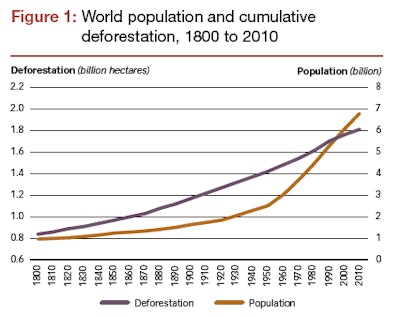
Over the past decade, Earth lost about 501,932 square miles of forest, 154,440 square miles of which comprised primary forest, according to the United Nations' Food and Agriculture Organization's latest State of the World's Forests report. In all, this forest loss and degradation are estimated to cost the global economy between $2 to $4.5 trillion each year.

External forces have always had a far greater impact on the forest sector than have changes within the sector itself, the FAO wrote, and the current speed and complexity of today's external changes are unprecedented. The global forestry sector still feels the lingering effects from the global economic crisis, resulting in a slow recovery in demand for construction materials and furniture, according to the FAO.
With the latest report, FAO also took an opportunity to review the evolution of forestry from the earliest moments of human history. "Among the lessons of history is that there are strong links between forest use (including deforestation) and economic and social development, and between the destruction of forests (with irreversible environmental damage) and economic decline," FAO wrote. Over the past 5,000 years, the cumulative loss of forest land worldwide is estimated at 7 billion square miles, an average net loss of 1,389 square miles per year. The trajectory of global deforestation has more or less followed the global growth rate of the human population, although the pace of deforestation was more rapid than population growth prior to 1950, and it has been slower since then (see table).























